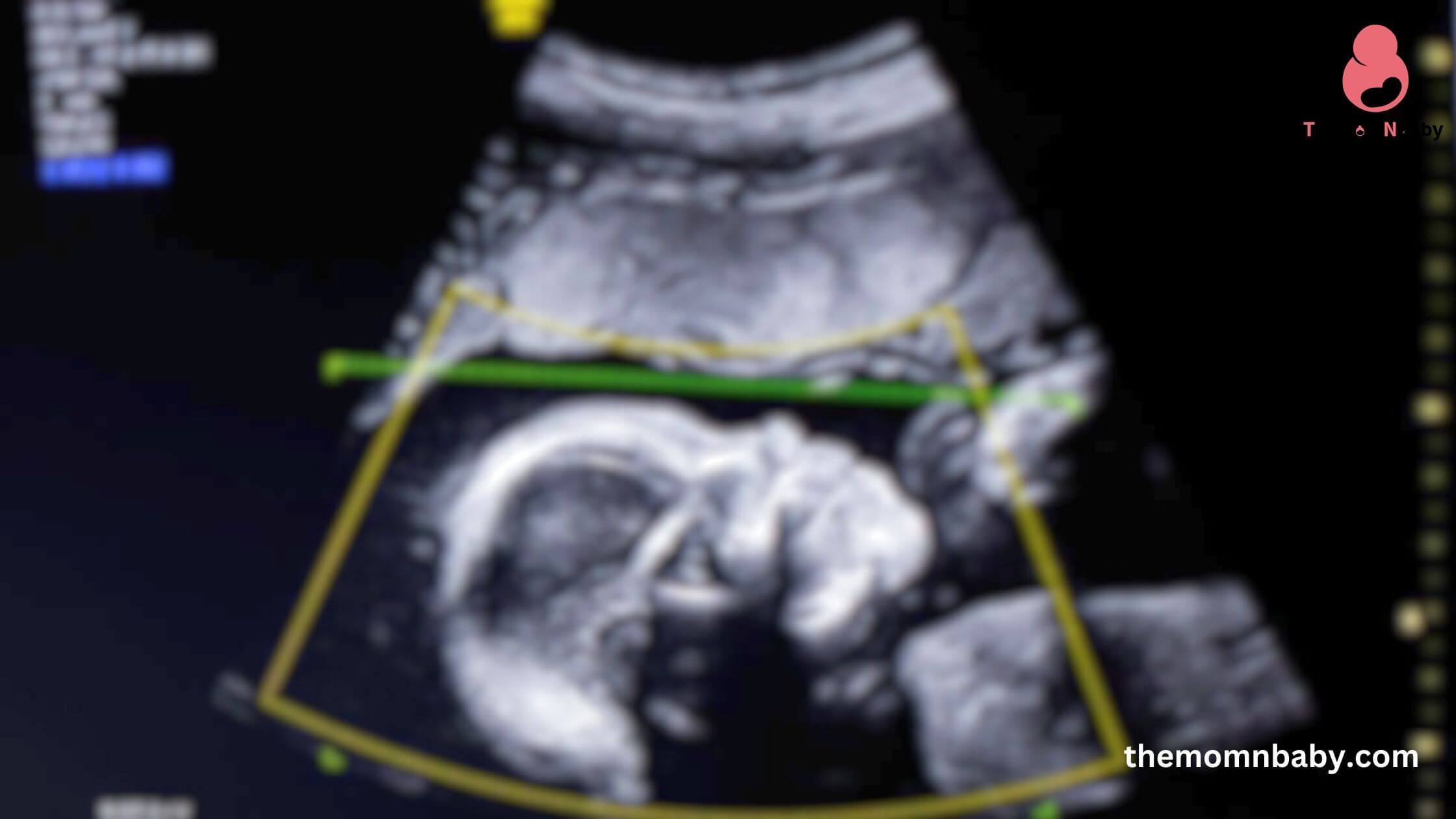
Importance of Anatomy Scan – All About
Level – 2 Ultrasound / Fetal Anatomy Ultrasound
Discover the incredible journey of an “Anatomy Scan” or “Fetal Anatomy Ultrasound”! When a mommy is about 20 weeks pregnant, doctors use a special machine to see inside her tummy. They can check how the baby is growing and look at all the little body parts. It’s like a magical window to see the baby’s heart, brain, and tiny arms and legs. This scan is super important because it helps make sure the baby is healthy. If there’s anything concerning, parents can learn about it early and make good choices for the baby’s care. So, it’s a special time for parents to see their little one and start preparing for the big adventure of becoming a mommy and daddy.
What is Anatomy Scan?
Healthcare providers consider the anatomy scan/ Level-2 Ultra sound a crucial and recommended prenatal procedure for several reasons. It allows doctors to access the developing fetus’s overall health and detect any potential abnormalities or structural defects. By examining various anatomical structures such as the brain, heart, spine, limbs, and internal organs, the scan provides valuable information that can aid in making informed medical decisions and planning for the future.
What are the consequences if a pregnant woman chooses not to undergo an anatomy scan?
If a pregnant woman decides not to undergo an anatomy scan, it may lead to missed opportunities for early detection of potential issues. Certain structural abnormalities or developmental problems may go unnoticed, potentially delaying necessary medical interventions or specialized care. The absence of an anatomy scan could result in a lack of crucial information regarding the fetus’s well-being, potentially limiting the ability to address any potential challenges or complications promptly. Therefore, it is generally advisable for pregnant women to undergo an anatomy scan to ensure the optimal health and care of both the fetus and the expectant mother.
What is the anatomy scan/level 2 ultrasound? What is the ideal time for a scan?
- Pregnancy experts recommend a detailed anatomy ultrasound, also known as a level 2 ultrasound, anatomy scan, or anomaly scan, between week 18 and week 22 weeks gestation. Its purpose is to assess the baby’s health and development.
- Unlike earlier ultrasounds that focus on measuring the baby and noting its position, a level 2 ultrasound provides a more detailed examination of the baby’s body parts. It typically includes a comprehensive assessment of the brain, heart, organs, umbilical cord, and amniotic fluid levels.
- Unlike the transvaginal scans done earlier in pregnancy, the anatomy scan is usually performed as a trans-abdominal ultrasound. It differs from other tests conducted in early pregnancy and can be an anxiety-inducing experience for expectant parents.
How is the anatomy scan / level 2 scan performed?
- Lie down on the exam table.
- Ultrasonic gel is applied to your belly.
- Technician or physician moves the ultrasound transducer wand over your abdomen.
- Pressure may be felt, but it is not painful for you or your baby.
- Communicate any discomfort to your provider.
- Fetal anatomy and size are assessed during the ultrasound.
- The entire anomaly scan typically takes 45 to 75 minutes.
- Results are often provided during the same appointment.
- Baby’s size and placenta are evaluated to ensure proper development.
3D ultrasounds
“Increasing popularity and accessibility of 3D and 4D ultrasounds. Many parents prefer the lifelike and detailed images provided by 3D ultrasounds compared to the standard 2D black and white photos. However, it’s important to note that obtaining high-quality 3D photographs can be challenging. Consult your doctor to discuss the advantages of 3D over 2D ultrasounds for your fetal anomaly screening.”
During the anatomy scan, what do doctors evaluate?
Level 2 ultrasound, which typically takes place between 18 and 22 weeks of pregnancy, the doctor examines various areas to ensure the baby’s well-being and detect any potential birth defects or anomalies. This includes a detailed assessment of the organs and limbs from head to toe. If you are expecting multiples, each fetus will undergo an individual scan. Based on the initial findings, your healthcare provider may recommend additional ultrasounds to monitor growth and reassess any concerns. The primary goal is to thoroughly examine the following areas and rule out any red flags:
- Brain: Includes ventricles, cerebellum, corpus callosum, and other important structures.
- Neck: Involves nuchal fold thickness.
- Face structures: Comprises palate, eyes, nose, lips, and ears.
- Heart and lungs: Examines the condition of the heart and lungs.
- Spine and ribs: Assesses the spine and ribs for any abnormalities.
- Abdominal organs: Checks the stomach, intestines, spleen, liver, gallbladder, and abdominal wall.
- Limbs and digits: Observes the limbs and fingers/toes.
- Genitals: Determines fetal sex if visible.
- Umbilical cord: Evaluates the umbilical cord, including vessels and insertion site.
- Placenta: Analyzes placenta structure and location.
- Cervical length: Measures the length of the cervix.
- Fetal position and movements: Tracks the position and movements of the fetus.
- Amniotic fluid: Assesses the quantity and quality of amniotic fluid.
Can I record the anatomy scan / level 2 scan procedure?
The ultrasound machine displays images on a screen for you and your provider/technician to view. They measure and record the images, and you may receive them as printouts or on a disc.
Some hospitals or clinics may allow you to record the ultrasound session using your personal recording device like a phone or camera. However, the rules regarding recording vary among doctors, so it’s advisable to inquire about specific guidelines before your appointment.
Fingers and Toes :
- Following birth, new parents often count the ten fingers and ten toes of their newborn. However, thanks to ultrasound technology, parents can now determine the finger and toe count even before the baby is born.
However, accurately counting each individual finger and toe during an ultrasound depends on the baby’s cooperation during the scan. If the baby is excessively active and constantly moving, it may be necessary to wait until birth for an accurate count of all the fingers and toes.
Legs:
- Unlike fingers and toes, larger areas such as your baby’s arms and legs can often be clearly visible on an ultrasound, even if the baby is moving.
- In the ultrasound, the technician will measure your baby’s thigh bone (femur), which assists in assessing the baby’s growth according to their gestational age.
- Additionally, the scan allows a chance to witness the baby kicking, which the mother may or may not feel at this stage of pregnancy. This can be another exciting moment to anticipate.
Arms:
- The ultrasound technician will assess the baby’s legs and measure the arm bones (radius, ulna). Depending on how they are positioned, you might observe your baby waving their arms or sucking their thumb.
- In fact, some technicians may even capture still photos of these precious moments, like your baby waving or thumb-sucking. These photos can be treasured keepsakes and serve as a beautiful way to remember the special moment. Isn’t it?
Brain and Stomach:
- The ultrasound technician examines your baby’s brain for its appearance and landmarks, and checks for any anomalies like choroid plexus cysts. They also look at the stomach, urinary tract, kidneys, and other structures. Unusual findings or abnormalities will be discussed with you.
Spine:
- The fetal anatomy survey includes an examination of your baby’s spine. It is one of the most recognizable features for parents during the ultrasound. The technician will ensure that the spine and neural tube are fully formed without cysts. If any abnormalities are detected, your provider will discuss them with you, typically before the end of the appointment.
Heart:
- The technician measures the fetal heart rate and checks for structural problems or anomalies in the baby’s heart. Further evaluation, such as a fetal echocardiogram, may be recommended if a problem is suspected.
Placenta and Umbilical Cord:
- During the anatomy scan, the technician will closely examine the placenta to determine its location and screen for placenta previa, a condition. The ultrasound also provides a clear view of the umbilical cord to confirm its proper functioning. A typical umbilical cord comprises two arteries and one vein. The technician will check if you have a three-vessel cord (normal) or a two-vessel cord (single umbilical artery).
It is important to note that babies with a two-vessel cord may have growth issues and other possible anatomical anomalies. However, most of them will have a normal fetal echocardiogram and be born healthy.
Sex of the Baby:
Around this time, the level 2 ultrasound can reveal the baby’s sex. However, accuracy depends on various factors and the baby’s cooperation. It’s advisable to ask the technician about their certainty regarding the prediction.
What to do if you detect any abnormalities?
The doctor will discuss the findings with the parents and provide guidance on the next steps if abnormalities are detected during an anatomy scan. The specific actions taken depend on the nature and severity of the abnormalities.
Further evaluation:
- If abnormalities are found during the scan, further diagnostic tests such as specialized ultrasounds, genetic testing, or consultations with specialists may be recommended to gather more information about the abnormality.
Counseling and support:
- Parents will receive counseling and support to understand the implications of the abnormalities and the available options for further evaluation, treatment, or management. This includes discussing the potential impact on the baby’s health and development and providing emotional support to cope with the situation.
Consultation with specialists:
- Parents may receive referrals to specialists such as genetic counselors, pediatric specialists, or surgeons who can offer expert advice and recommendations, depending on the nature of the abnormalities.
Treatment or intervention:
- In some cases, medical or surgical interventions may be recommended to address the abnormalities or manage associated complications. The healthcare team will explain the available options and help parents make informed decisions based on their individual circumstances.
It’s important to remember that each case is unique, and the course of action will vary depending on the specific situation. Open communication with the doctor and seeking support from medical professionals can help guide parents through the process and ensure the best possible care for the baby.
Tips for successful anatomy scan :
Here are some tips to ensure a successful anomaly scan:
Follow instructions:
Adhere to any instructions given by your doctor regarding preparation for the scan, such as drinking water or having a full bladder.
Choose the right timing:
Schedule the scan during the recommended time frame, usually between 18 to 22 weeks gestation, to optimize visibility and accuracy.
Wear comfortable clothing:
- Dress in loose and comfortable clothing to easily expose your belly during the scan.
Bring a support person:
- It can be helpful to have a partner, family member, or friend accompany you for emotional support and to share in the experience.
Stay relaxed and hydrated:
- Try to stay relaxed before and during the scan. Drink water beforehand to ensure clear images during the ultrasound.
Communicate with the technician:
- Feel free to ask questions, express any concerns, and engage with the ultrasound technician during the scan. They can provide insights and explanations about what they are observing.
Take note of the findings:
- If possible, request a summary or report of the scan findings from your healthcare provider. This will help you keep track of important information and discuss it with your healthcare team if needed.
It’s essential to keep in mind that if a potential problem is detected during an anatomy scan, it doesn’t necessarily mean there is a real problem. Sometimes further tests show that the issue can be easily fixed, will naturally resolve as the baby grows, or was simply an abnormality that appeared in the initial scan but isn’t a cause for concern.
Some Common Questions about Anatomy scan or Level 2 Scan:
1. What is a anatomy scan scan?
Answer : Detailed assessment of the fetus using ultrasound technology.
2. How does a anatomy scan differ from other types of scans?
Answer : To get Higher resolution images for better visualization of fetal structures.
3. What is the purpose of a anatomy scan?
Answer : To assess fetal well-being, including evaluating anatomy and detecting abnormalities.
4. What information can a level 2 scan obtain?
Answer : Detailed anatomy, measurements, and growth information of the fetus.
5. What are the typical applications of a level 2 scan?
Answer : Evaluating pregnancy progress, screening for abnormalities, aiding clinical decisions.
6. How long does a level 2 scan typically take?
Answer : Variable duration, typically longer than routine scans (varies based on factors).
7. How should I prepare for a level 2 scan?
Answer : Follow instructions provided by experts for preparation. (such as drinking water or having a full bladder.)
8. Can an anatomy scan detect all types of abnormalities or conditions?
Answer : Level 2 scans can detect many abnormalities, but not all types.





